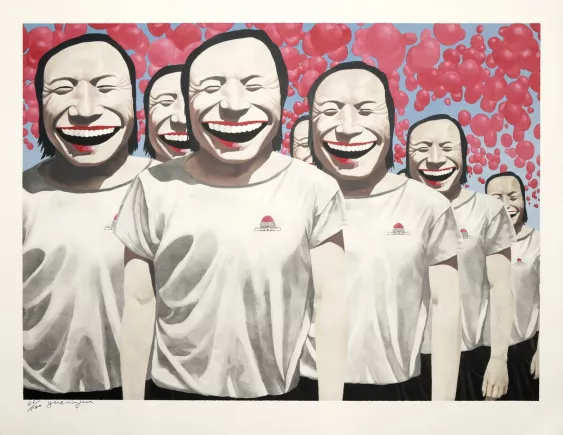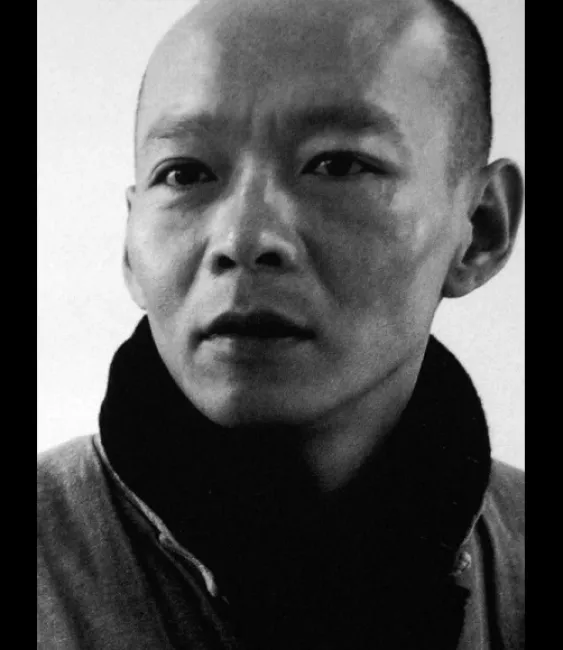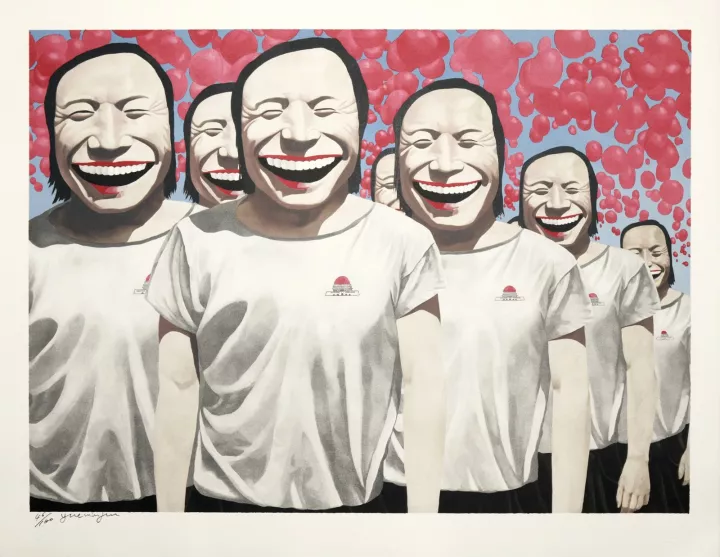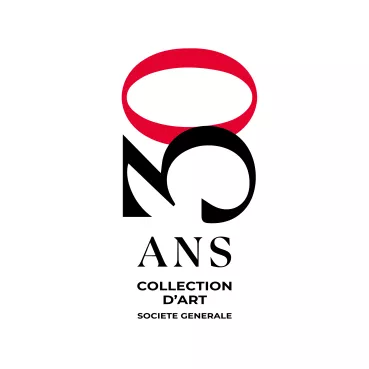
Zoom
Happiness
2007
Yue Minjun
Works on paper
70 x 90 cm
With face frozen in a hilarious grin, his recurrent figure borrows the painter’s own features, in an exacerbated form of self-mockery. Sporting a huge, aggressively white set of teeth, this monstrous, often cloned figure never loses his troubling, outsized grin, which recalls both the radiant smiles used in western advertising and Communist propaganda’s enthusiastic faces. Whether meant to challenge or to shock, this perpetual, enigmatic laugh, which may also recall Buddha’s smile, compels the spectator to ponder over most existential questions about the meaning (or lack of meaning) of life.
Text : Carole Vantroys.
Translation : Pamela Hargreaves.
Text : Carole Vantroys.
Translation : Pamela Hargreaves.
Yue Minjun
China
Born in 1962

Born in Daqing, Heilongjiang Province, China.
Sold for nearly six million dollars in 2007, Yue Minjun’s Execution, a painting representing the Tiananmen Square massacre, after Manet’s Execution of Maximilian, itself inspired by Goya’s The Third of May, became the most expensive contemporary Chinese painting ever (a record since beaten by Cai Guo-Qiang and Zeng Fanzhi). Though he refuses to be put in any category, Yue Minjun (Yue is his surname and Minjun his first name) is a key figure in the Cynical Realism movement that emerged in China in the early 1990s. Midway between caricature and Pop Art, his grotesque paintings with garish colours draw extensively on European masterpieces, especially Spanish art from Velázquez to Goya, in order to expose the violence and absurdity of contemporary society.
Text : Carole Vantroys.
Translation : Pamela Hargreaves.
Sold for nearly six million dollars in 2007, Yue Minjun’s Execution, a painting representing the Tiananmen Square massacre, after Manet’s Execution of Maximilian, itself inspired by Goya’s The Third of May, became the most expensive contemporary Chinese painting ever (a record since beaten by Cai Guo-Qiang and Zeng Fanzhi). Though he refuses to be put in any category, Yue Minjun (Yue is his surname and Minjun his first name) is a key figure in the Cynical Realism movement that emerged in China in the early 1990s. Midway between caricature and Pop Art, his grotesque paintings with garish colours draw extensively on European masterpieces, especially Spanish art from Velázquez to Goya, in order to expose the violence and absurdity of contemporary society.
Text : Carole Vantroys.
Translation : Pamela Hargreaves.
Artwork of
Yue Minjun

Visit the Collection
Book a visitThe visit of the Collection is open to you! Come alone, in a group or on a school outing !
Reservation is mandatory in order to offer you a guided tour, at La Défense or by videoconference.



